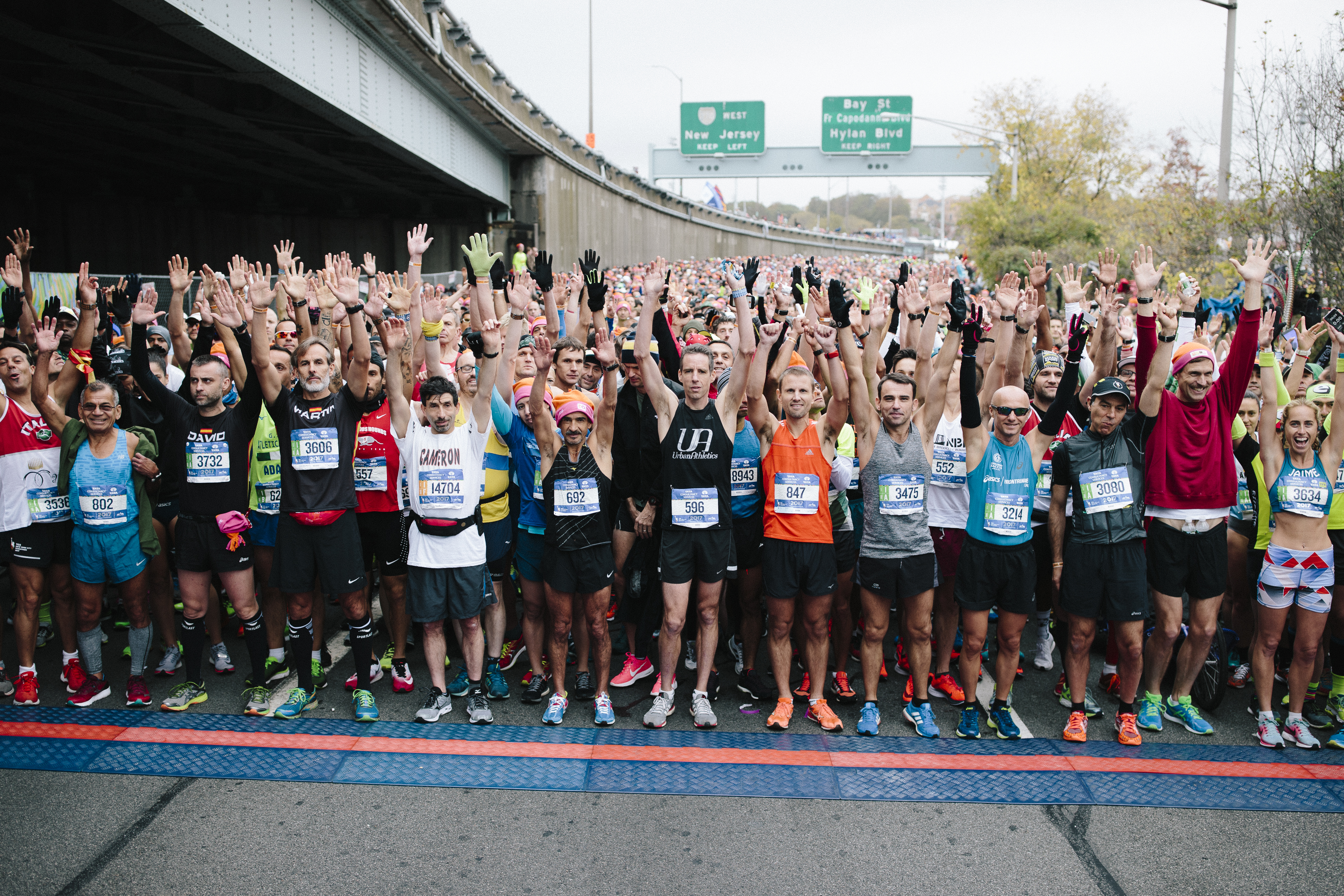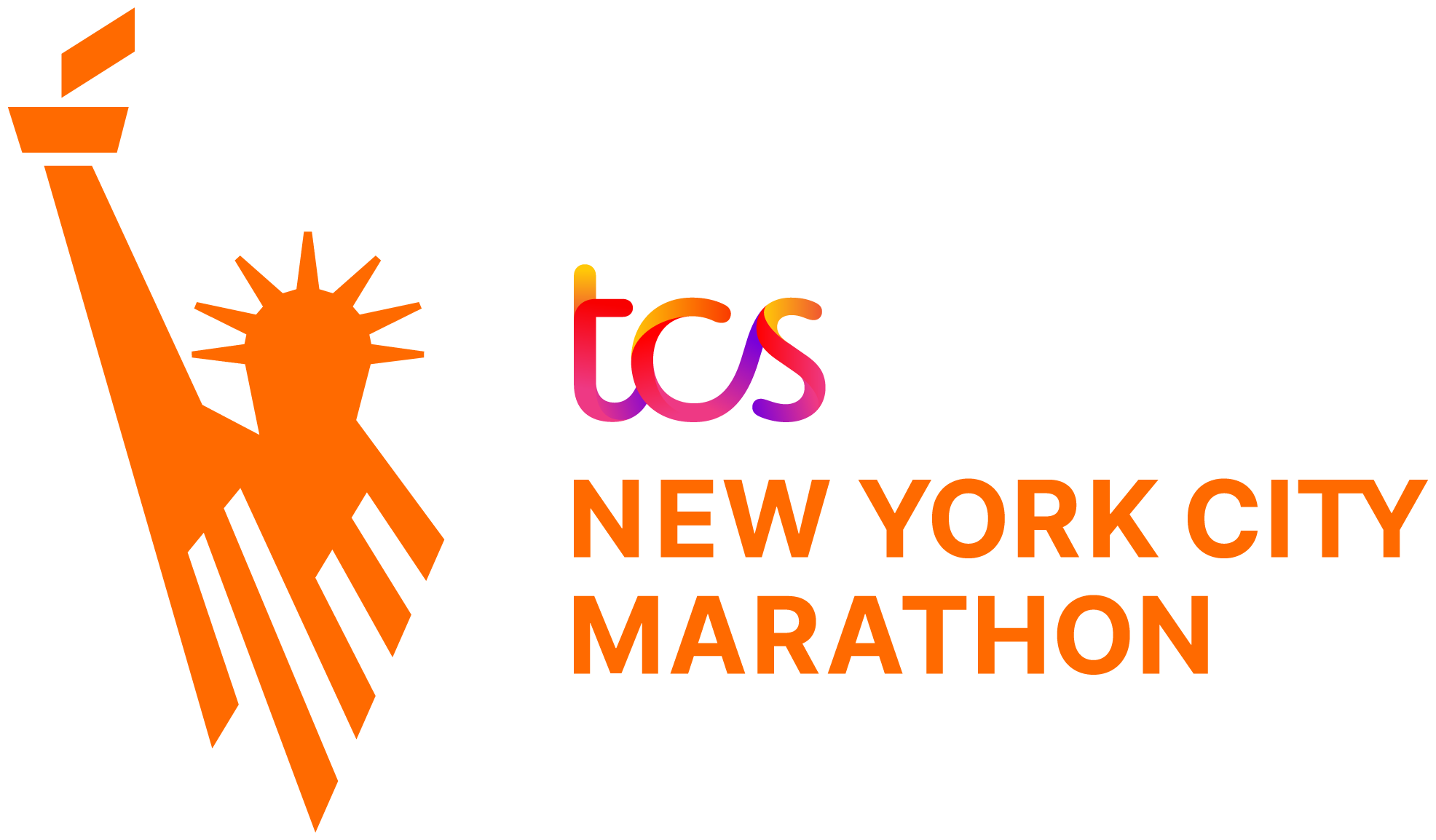Marathon Myths Debunked by NYRR Staffers

Marathon mythology is as old as Pheidippides, the Athenian courier who, legend has it, ran approximately 26.2 miles to announce the Greek victory over Persia in the Battle of Marathon and then died on the spot. Pheidippides’ story unwittingly triggered centuries of concern trolling toward distance runners.
The TCS New York City Marathon, as the biggest marathon in the world, has generated its own mythology around its course full of bridges and boroughs and waves of sound.
We enlisted New York Road Runners coaches and employees to help debunk a few lingering myths about the legendary New York course and the marathon experience.

Myth: The Green wave is less fun than the Blue and Orange waves.
The New York City Marathon has three separate start lines. Runners are divided into three differently colored courses for the first eight miles of the race. The blue and orange waves begin atop the Verrazzano Bridge. The green wave takes off on the bridge’s lower level and some runners worry they may be missing out on an essential part of the experience out in the elements. NYRR coach Melanie Kann defended the runners in green. “The green wave has its own little perks, including a slight shield from the wind on the Verrazano, and a nice tour of the neighborhood in Bay Ridge, where enthusiastic spectators are out on their lawns cheering on the green runners before they enter the big show on Fourth Avenue,” she said.

Myth: The Bronx is the hardest part of the TCS New York City Marathon Course, and it’s too quiet!
The marathon enters the Bronx during mile 20 and exits it just after mile 21.
Some runners have complained that this segment is devoid of spectators and that the silence of the Bronx sapped energy at a critical point of the race — a myth that the NYRR staffers loudly rebut.
“This couldn’t be farther from the truth,” said Heather Laurel, the assistant manager of event management and logistics at NYRR. “We’re not going to lie — the Bronx portion of the course is tough, mainly because it includes the last two bridges of the course (yay!), but also because of the mental games runners tend to play around the 20-mile mark, often referred to as ‘the wall’."
Laurel added, “Rest assured that the roughly two miles you complete on the mainland will be filled with so much energy and music that you won’t remember you’ve completed 21 miles by the time you leave the birthplace of hip-hop. There are tons of enthusiastic spectators there to cheer you on, and no fewer than seven entertainment zones. That’s a LOT to cover less than two miles! You’ll hear local musicians, lively DJs, and even a Japanese Taiko drum ensemble! The Bronx is filled with love and joy and music. You should look forward to it! MYTH BUSTED!”

Myth: The TCS New York City Marathon is really, really hilly.
Marathon trivia: The highest hill in the TCS New York City Marathon is the Verrazzano Bridge. That is, miles 1 and 2.
“The most common myth is that the course is hilly,” said NYRR coach Ben Delaney. “The highest point of the race is in the first two miles, at a whopping 260 ft above sea level, and you do not even feel it.”
Delaney said that it’s not the elevation, it’s just the timing when it comes to the hills on the New York course. “The hills, or inclines, later in the course just come at not the more opportune times,” he said. “You have the Queensboro Bridge at miles 15 to 16 and then Fifth Avenue at miles 22 to 23. That last one on Fifth Ave is not pleasant because you have 22 miles on your legs, but it’s not steep. Plus, once that is done, you are in Central Park and you can taste the finish line.”

Myth: You spend so much time in the start village that you lose your will to run the race.
Delaney urged runners to view the start village in Staten Island as a place to build energy and camaraderie with fellow runners instead of as a giant waiting room.
“By the time you get to the start village, the time moves right along as runners go through security, get to their waves and corrals, grab Dunkin’ coffee or Chiquita bananas, hit the potty one more time and chat with other runners,” Delaney said. Many from outside of the five boroughs and outside the U.S. [are] looking for local advice and insider knowledge of the course. Then, before you know it, you are in the corrals, walking to the start line, the cannon goes off, ’New York, New York’ starts to play over the PA and away you go on a 26.2-mile journey you will never forget.”

Myth: Bank time in the early, flatter miles of the race so you have energy for the bridges and hills at the end.
The race has begun! People are yelling your name and high-fiving you! You’ve never run so fast in your life! This is great! Until it’s not. “One of the biggest mistakes marathoners make is going out too fast,” said NYRR coach and editorial director Gordon Bakoulis. “Marathon pace is not hard to sustain for five, 10, even 15 miles, so there’s a temptation to run faster and ‘cushion’ against the slowing that might occur later.”
The myth that runners should use the marathon’s flatter, faster early miles to bank time for the hiller final miles of the course is one NYRR coaches often hear from runners they work with, but said they would never recommend.
“Here, time is not money. That’s because time is not just time; it’s energy. And once that energy is gone, it’s gone,” said NYRR coach Amy Sitar. “Any time you ‘banked’ you’ve now withdrawn—and then some.” Sitar advises running at a consistent effort level, instead of focusing on pace. “Run with an even effort with an eye toward conserving energy early so you have enough to conquer the Queensboro Bridge, the Willis Avenue Bridge, and Fifth Avenue before sailing over the finish line,” she said.
NYRR coach Farah Visslailli acknowledged that this is tough on the New York City course. “Admittedly, it is easier said than done, especially on this course with such great crowd support in those early Brooklyn miles. The energy of the crowd and your fresh legs will make it hard to hold back,” she said. “But but if you run a smart race and start conservatively, you’ll have the energy later in the race to maintain your effort level going up those hills, and finish strong.”
Take in the scenery, fuel, and hydrate during those early miles, Bakoulis urged. And send that time-banking myth packing! “No coach recommends it and no runner ever succeeds with it!” she said.

Myth: You need to run 26.2 miles in training in order to finish a marathon.
There is a reason most marathon training plans only include long runs up to about 22 miles, said NYRR coach Roberto Mandje.
“Many runners think it’s necessary to cover the marathon distance at some point in their training. Not only is that unnecessary, it’s actually something we discourage,” Mandje said. “It takes even longer to recover from a run of that duration, which will affect the following days and week’s training load. There is no magic number, but rather a range of 16 to 22 miles for your longest runs.”

Myth: Eat lots of pasta the night before your marathon.
The pre-marathon pasta dinner, while rooted in some nutritional truth, will not give your feet wings on the course.
“Realistically, it's beneficial to increase your carbohydrate consumption in the week leading up to the race, not the night before,” said Tammy Salazar, a coordinator on NYRR’s Runner Products and Services team. “This can be anything from rice to potatoes or even pizza!”

Myth: You need to get a good night’s rest the night before a race.
For most runners, even experienced marathoners, good sleep is difficult the night before a big race.
“We all know it’s almost impossible to get uninterrupted sleep when you’re excited and nervous for what’s coming up in the morning,” said Emilee Lupi, a coordinator on NYRR’s Brand, Marketing and Communications team. For Lupi, she said, “The most important sleep is the one before that, two nights before your race.”

Myth: Something’s going to go wrong and ruin my perfect race day.
NYRR Coach Bakoulis ran the 2019 Bank of America Chicago Marathon in 3:27 Sunday. Sounds like a good race day to us. But was it?
“One truth that I relearned is that race day is never going to be perfect, but it can still be amazing,” Bakoulis said. “I think a lot of runners feel anxious that something is going to go wrong and ‘ruin’ their perfect race day. The imperfections of my Chicago Marathon included lots of headwinds, two bathroom breaks, blisters on both feet, and the usual smushed toenails, but it still was one of the best days of 2019 so far!”




